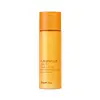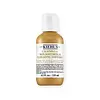What's inside
What's inside
 Key Ingredients
Key Ingredients

 Benefits
Benefits

 Concerns
Concerns

 Ingredients Side-by-side
Ingredients Side-by-side

Water
Skin ConditioningButylene Glycol
HumectantGlycerin
Humectant1,2-Hexanediol
Skin ConditioningCetyl Ethylhexanoate
EmollientHydrogenated Polydecene
EmollientNiacinamide
SmoothingGlyceryl Glucoside
HumectantButyrospermum Parkii Butter
Skin ConditioningCetearyl Alcohol
EmollientGlyceryl Stearate
EmollientLimnanthes Alba Seed Oil
Skin ConditioningCetearyl Olivate
Sorbitan Olivate
EmulsifyingVinyldimethicone
Propanediol
SolventC14-22 Alcohols
Emulsion StabilisingCarbomer
Emulsion StabilisingC12-20 Alkyl Glucoside
EmulsifyingTromethamine
BufferingEthylhexylglycerin
Skin ConditioningAdenosine
Skin ConditioningCoptis Chinensis Root Extract
AntioxidantDisodium EDTA
Parfum
MaskingHyaluronic Acid
HumectantHydrolyzed Hyaluronic Acid
HumectantSodium Hyaluronate
HumectantAsparagus Cochinchinensis Root Extract
Skin ConditioningSaccharomyces/Xylinum/Black Tea Ferment
Skin ConditioningUlmus Davidiana Root Extract
Skin ConditioningVinca Minor Leaf Extract
Skin ConditioningCamellia Sinensis Leaf Extract
AntimicrobialPyrus Malus Flower Extract
Skin ConditioningThymus Vulgaris Extract
PerfumingHydrolyzed Collagen
EmollientWater, Butylene Glycol, Glycerin, 1,2-Hexanediol, Cetyl Ethylhexanoate, Hydrogenated Polydecene, Niacinamide, Glyceryl Glucoside, Butyrospermum Parkii Butter, Cetearyl Alcohol, Glyceryl Stearate, Limnanthes Alba Seed Oil, Cetearyl Olivate, Sorbitan Olivate, Vinyldimethicone, Propanediol, C14-22 Alcohols, Carbomer, C12-20 Alkyl Glucoside, Tromethamine, Ethylhexylglycerin, Adenosine, Coptis Chinensis Root Extract, Disodium EDTA, Parfum, Hyaluronic Acid, Hydrolyzed Hyaluronic Acid, Sodium Hyaluronate, Asparagus Cochinchinensis Root Extract, Saccharomyces/Xylinum/Black Tea Ferment, Ulmus Davidiana Root Extract, Vinca Minor Leaf Extract, Camellia Sinensis Leaf Extract, Pyrus Malus Flower Extract, Thymus Vulgaris Extract, Hydrolyzed Collagen
Water
Skin ConditioningGlycerin
HumectantIsopropyl Lauroyl Sarcosinate
Skin ConditioningDimethicone
EmollientNiacinamide
SmoothingPropanediol
SolventPropylene Glycol
HumectantC14-22 Alcohols
Emulsion StabilisingPanthenol
Skin ConditioningDimethicone/Vinyl Dimethicone Crosspolymer
Skin ConditioningPhenoxyethanol
PreservativeTocopherol
AntioxidantCapryloyl Salicylic Acid
ExfoliatingC12-20 Alkyl Glucoside
EmulsifyingCarbomer
Emulsion StabilisingPyridoxine Hcl
Skin ConditioningChlorphenesin
AntimicrobialPentaerythrityl Tetra-Di-T-Butyl Hydroxyhydrocinnamate
AntioxidantXanthan Gum
EmulsifyingAcrylates/C10-30 Alkyl Acrylate Crosspolymer
Emulsion StabilisingCitrus Limon Peel Oil
MaskingLimonene
PerfumingCalendula Officinalis Flower
Skin ConditioningTrisodium Ethylenediamine Disuccinate
Zinc PCA
HumectantMaltodextrin
AbsorbentSodium Hydroxide
BufferingCalendula Officinalis Flower Extract
MaskingGeranium Maculatum Oil
MaskingChamomilla Recutita Flower Oil
MaskingCitric Acid
BufferingCitral
PerfumingCamellia Sinensis Leaf Extract
AntimicrobialCitronellol
PerfumingGeraniol
PerfumingLinalool
PerfumingCymbopogon Schoenanthus Oil
MaskingArtemisia Absinthium Extract
Skin ConditioningWater, Glycerin, Isopropyl Lauroyl Sarcosinate, Dimethicone, Niacinamide, Propanediol, Propylene Glycol, C14-22 Alcohols, Panthenol, Dimethicone/Vinyl Dimethicone Crosspolymer, Phenoxyethanol, Tocopherol, Capryloyl Salicylic Acid, C12-20 Alkyl Glucoside, Carbomer, Pyridoxine Hcl, Chlorphenesin, Pentaerythrityl Tetra-Di-T-Butyl Hydroxyhydrocinnamate, Xanthan Gum, Acrylates/C10-30 Alkyl Acrylate Crosspolymer, Citrus Limon Peel Oil, Limonene, Calendula Officinalis Flower, Trisodium Ethylenediamine Disuccinate, Zinc PCA, Maltodextrin, Sodium Hydroxide, Calendula Officinalis Flower Extract, Geranium Maculatum Oil, Chamomilla Recutita Flower Oil, Citric Acid, Citral, Camellia Sinensis Leaf Extract, Citronellol, Geraniol, Linalool, Cymbopogon Schoenanthus Oil, Artemisia Absinthium Extract
 Reviews
Reviews

Ingredients Explained
These ingredients are found in both products.
Ingredients higher up in an ingredient list are typically present in a larger amount.
We don't have a description for C12-20 Alkyl Glucoside yet.
C14-22 Alcohols is made up of synthetic fatty alcohols. More specifically, these fatty alcohols contain 14 to 22 carbons in the alkyl chain.
Its main purpose is to stabilize products. As an emulsifier, it helps prevent waters and oils from separating.
Camellia Sinensis Leaf Extract is derived from the leaves of the tea plant. Black tea, green tea, and oolong tea are all harvested from this plant.
This ingredient has many skin benefits:
This ingredient contains polyphenols, a strong antioxidant. Antioxidants help fight off molecules that damage skin cells.
On top of that, the antioxidants in green tea neutralize free-radicals from the sun. This gives the skin some extra UV protection, but should not replace sunscreen.
Many components of tea have anti-inflammatory properties.
Polyphenols and L-theanine help soothe the skin and reduce irritation. The caffeine in Camellia Sinensis Leaf Extract helps calm inflamed blood vessels.
Other compounds found in tea include: Vitamin Bs, linoleic acid, magnesium, calcium, iron, and zinc.
Research has shown both drinking Camellia Sinensis Leaf Tea and applying it to the skin can help boost skin elasticity and hydration. Studies also show using tea extract may reduce sebum, or oil, production.
Learn more about Camellia Sinensis Leaf ExtractCarbomer is a polymer of acrylic acid. Its main role is to create a gel consistency.
A high amount of carbomer can cause pilling or balling up of products. Don't worry, most products contain 1% or less of carbomer.
Glycerin is already naturally found in your skin. It helps moisturize and protect your skin.
A study from 2016 found glycerin to be more effective as a humectant than AHAs and hyaluronic acid.
As a humectant, it helps the skin stay hydrated by pulling moisture to your skin. The low molecular weight of glycerin allows it to pull moisture into the deeper layers of your skin.
Hydrated skin improves your skin barrier; Your skin barrier helps protect against irritants and bacteria.
Glycerin has also been found to have antimicrobial and antiviral properties. Due to these properties, glycerin is often used in wound and burn treatments.
In cosmetics, glycerin is usually derived from plants such as soybean or palm. However, it can also be sourced from animals, such as tallow or animal fat.
This ingredient is organic, colorless, odorless, and non-toxic.
Glycerin is the name for this ingredient in American English. British English uses Glycerol/Glycerine.
Learn more about GlycerinNiacinamide is a multitasking form of vitamin B3 that strengthens the skin barrier, reduces pores and dark spots, regulates oil, and improves signs of aging.
And the best part? It's gentle and well-tolerated by most skin types, including sensitive and reactive skin.
You might have heard of "niacin flush", or the reddening of skin that causes itchiness. Niacinamide has not been found to cause this.
In very rare cases, some individuals may not be able to tolerate niacinamide at all or experience an allergic reaction to it.
If you are experiencing flaking, irritation, and dryness with this ingredient, be sure to double check all your products as this ingredient can be found in all categories of skincare.
When incorporating niacinamide into your routine, look out for concentration amounts. Typically, 5% niacinamide provides benefits such as fading dark spots. However, if you have sensitive skin, it is better to begin with a smaller concentration.
When you apply niacinamide to your skin, your body converts it into nicotinamide adenine dinucleotide (NAD). NAD is an essential coenzyme that is already found in your cells as "fuel" and powers countless biological processes.
In your skin, NAD helps repair cell damage, produce new healthy cells, support collagen production, strengthen the skin barrier, and fight environmental stressors (like UV and pollution).
Our natural NAD levels start to decline with age, leading to slower skin repair, visible aging, and a weaker skin barrier. By providing your skin niacinamide, you're recharging your skin's NAD levels. This leads to stronger, healthier, and younger looking skin.
Another name for vitamin B3 is nicotinamide. This vitamin is water-soluble and our bodies don't store it. We obtain Vitamin B3 from either food or skincare. Meat, fish, wheat, yeast, and leafy greens contain vitamin B3.
The type of niacinamide used in skincare is synthetically created.
Learn more about NiacinamidePropanediol is an all-star ingredient. It softens, hydrates, and smooths the skin.
It’s often used to:
Propanediol is not likely to cause sensitivity and considered safe to use. It is derived from corn or petroleum with a clear color and no scent.
Learn more about PropanediolWater. It's the most common cosmetic ingredient of all. You'll usually see it at the top of ingredient lists, meaning that it makes up the largest part of the product.
So why is it so popular? Water most often acts as a solvent - this means that it helps dissolve other ingredients into the formulation.
You'll also recognize water as that liquid we all need to stay alive. If you see this, drink a glass of water. Stay hydrated!
Learn more about Water